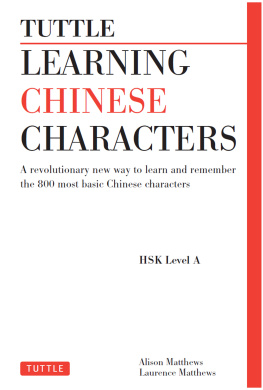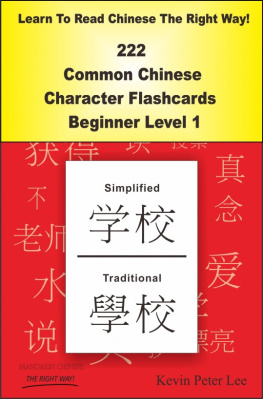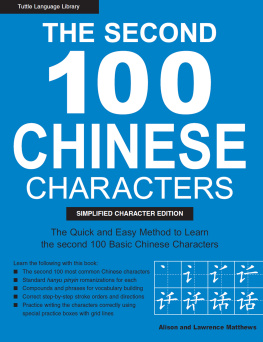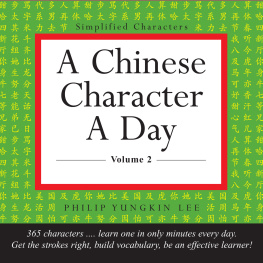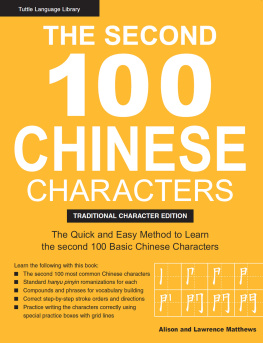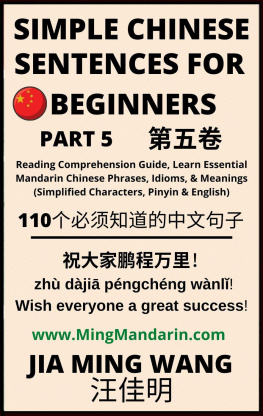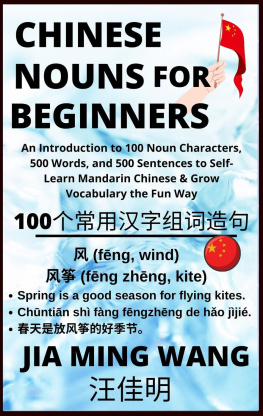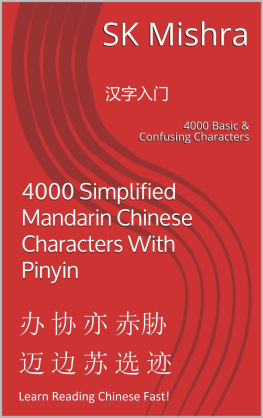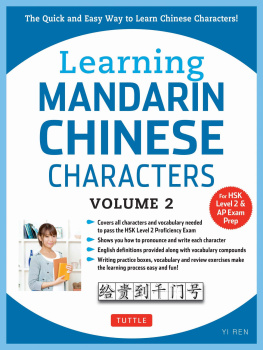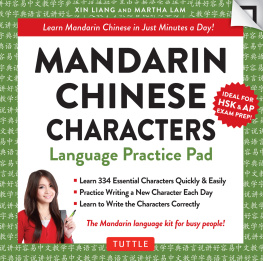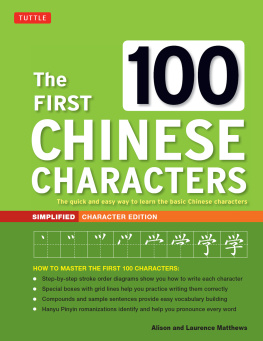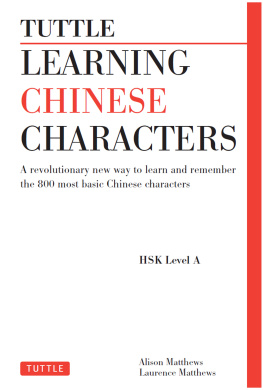Acknowledgments
First and foremost we want to thank Janet and Dil for their wonderful illustrations. From the very first day they both entered into the spirit of the enterprise with immense energy and enthusiasm, and our Friday mornings will never be so much fun again! The initial idea was to have a few pictograms for the basic building block characters we never dreamed we would find someone who would take the task by the scruff of the neck and attempt all 219! Although we all helped at times by brainstorming possible interpretations, Janets ability to think outside the box resulted in some truly inspired character pictures and many of her interpretations will never be bettered. Similarly, when Dil brought her gifts as an illustrator to bear on the story pictures, she quickly grasped that these pictures had a very specific job to do and set about developing exactly the right style for them. We will always remember her exclamations of, Oh, I shall enjoy drawing that , on being presented with yet another bizarre story to illustrate. Her enthusiasm and sense of fun have produced some truly memorable pictures.
Before we sat down to write all the stories we wanted to make sure that using visualization to remember the characters would work for different ages, backgrounds and mindsets. Our search for willing volunteers resulted in a group that covered a range of ages and interests in different parts of the world. Amongst this group was a hard core who were especially helpful, and a big thank you goes out to Larry Fogg, Pat Halliwell, Marion Brumby and Nigel Maggs.
To try and ensure that the introductory text was easy to understand we prevailed upon some very good friends (most of whom have never studied any Chinese) to read it. All of them spent time going over the text and made pertinent and helpful comments and suggestions. Our thanks to Martin Adfield, John & Barbara Eastwood, Geoff & Jill Cory, and Nigel & Toby Brown. (We should add, though, that we take full responsibility for the finished result).
There are people in life who can be guaranteed to listen to your ideas no matter how off-beat they are, and encourage you to go for it if they think an idea will work. Debbie and Dave Russell have given unstintingly of their time in this regard. As well as talking over detailed points they have given us their unflagging support throughout. Thank you!
Inevitably there are also times in the writing of any book when you wonder why you ever got started. At times like these everyone should have a friend like Judy Landis. Quite apart from reading parts of the book, Judy has kept us straight on all things American and is our one-woman cheer-leader. Her observations are always eloquent, sound and invariably shot through with common sense and humor. Our love and thanks go to her.
For her professionalism and understanding wed like to thank Doreen Ng at Tuttle Publishing.
Finally, it can be hard to live with two people who wander around saying things like thats the sort of job a ghostly dwarf would do or what we need here is two giants from Shanghai. So our thanks go to Helen for her forbearance in not actually throwing anything at us (at least, not for these particular transgressions).
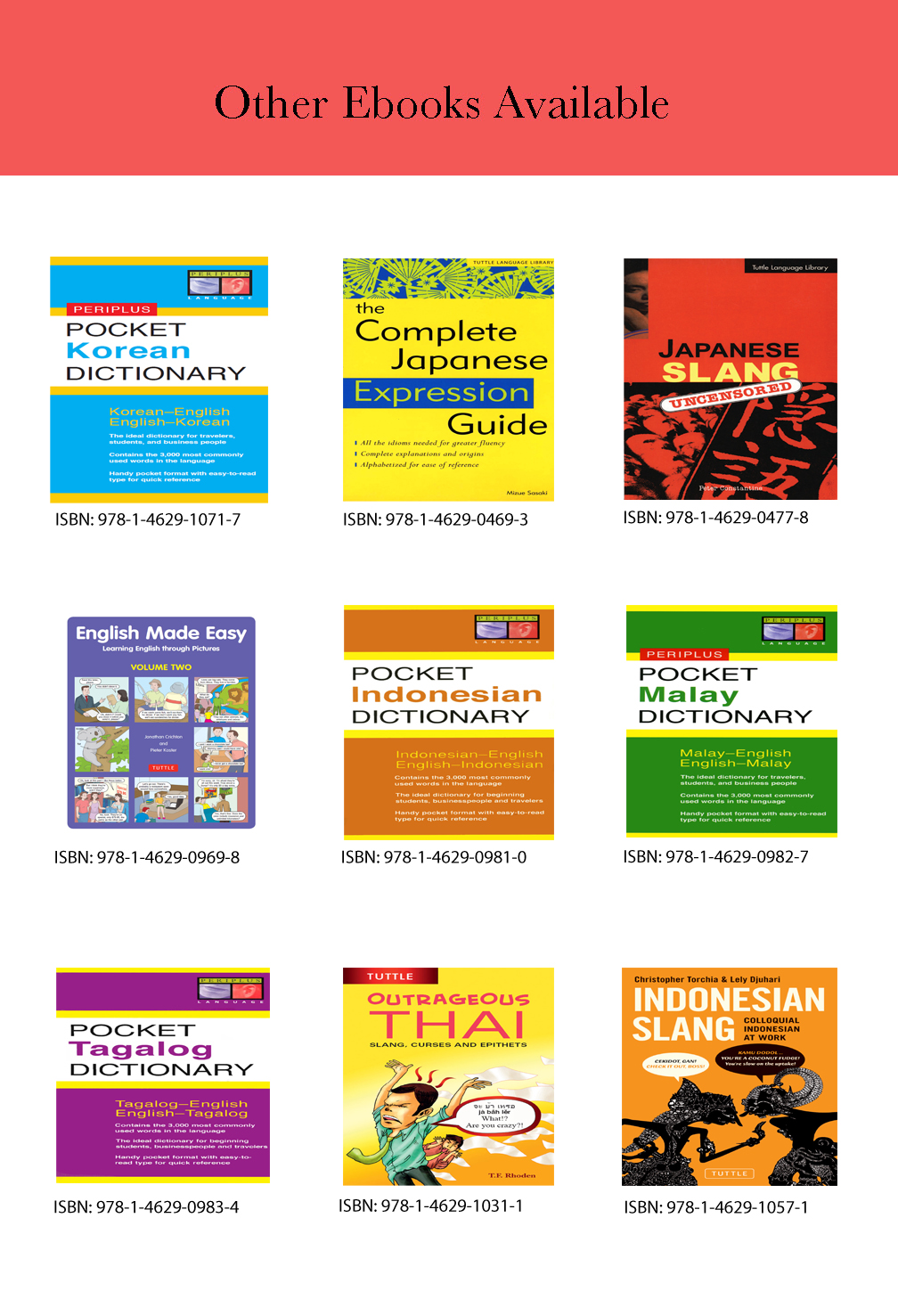
APPENDIX: Soundwords
Soundwords are the words we use in the stories to indicate the pronunciation of a character. The first syllable of the English soundword has a similar sound to the pronunciation of the Chinese character. So for the pronunciation ma we could use the soundwords market or marbles because ma is pronounced somewhat like the mar sound at the start of these words. The tables in this appendix give you all the pronunciations of Chinese characters you need for HSK Level A, along with an example of a soundword that could be used for each of them. (For a full explanation of how we use soundwords, along with archetypes to represent tones, see the User Guide). Again we must stress that the purpose of the soundwords is to help you remember the pronunciations of each of the 800 characters; it is not to mimic exactly the sounds of Chinese.
Here is a very brief description of the sounds of Chinese as mentioned in the User Guide, you really need to hear Chinese spoken to appreciate fully the correct sounds.
Consonants
b, p, m, f, d, t, n, l, s, r, g, k, h are pronounced similarly to how they are in English.
(Although b and d are more like soft versions of p and t respectively).
z is pronounced like the ds in adds and c like the ts in tsunami.
Because English does not use these sounds at the beginning of words, we had to cheat with the soundwords here (it was that or declare them DIY which we have tried to avoid whenever possible). If you look at Table youll see that for z we simply use soundwords beginning with z, and for c we use soundwords beginning with st (not ts).
zh, ch, sh are pronounced like the j in jar, the ch in chart, and the sh in shark respectively.
j, q, x are pronounced like the j in jeep, the ch in cheat, and the sh in sheet respectively.
The difference between zh & j, ch & q and sh & x is that for zh, ch and sh the tongue is curled back against the roof of the mouth to say the sound, and for j, q and x the tip of the tongue is pressed against the lower teeth. For soundwords we just use English words beginning with j, ch and sh regardless. Happily this does not cause any confusion because, as you will see in the tables, if zh has an entry in a particular vowel column then j does not and vice versa. The same applies to the other two pairs (ch & q and sh & x).
Vowels
a, o, e, u are pronounced as indicated by the soundwords in the relevant columns in Table .
(But when e has neutral tone, it is pronounced closer to the u in huh).
i can be pronounced in two ways:
After most consonants it is pronounced like the i in Fiji. But after some consonants (z, c, s, zh, ch, sh, r; see the final column in Table ) it is as if the i is hardly there at all. It seems to just modify the consonant sound slightly. The closest we could get to this sound is to use English soundwords where the first syllable is unstressed, so for zhi we use jacuzzi. (For this reason, in all other soundwords we have chosen, the stress is on the first syllable).
is pronounced like in German or the u in the French tu.
Say oo, and then, keeping your lips in the same position, try and say ee. Rather confusingly the two dots are only written above the u for n and l (to distinguish them from nu and lu ), otherwise they are omitted (see the column of Table ). Pouring rain is used in the stories to indicate pronunciations (see Character 15).
When vowels are on their own (with no consonant in front of them), the pinyin system sometimes inserts a y or a w before the vowel. So instead of i, u and we write yi , wu and yu respectively (see the final row of the tables).
In the tables you will see that we have listed the consonants down the left-hand side and the vowels along the top. The table entries give the pinyin spelling and an example soundword for each combination of consonant and vowel we need. For some combinations there is no reasonable soundword in English these are the DIY pronunciations and they are indicated in the table by DIY. Blanks indicate combinations not used in HSK Level A.
Remember that it is the sound of the soundword that is important, not its English spelling. So the soundwords herb, shirt and lurk all appear in the e column of Table because they all have the same vowel sound even through their English spellings use three different vowels.

